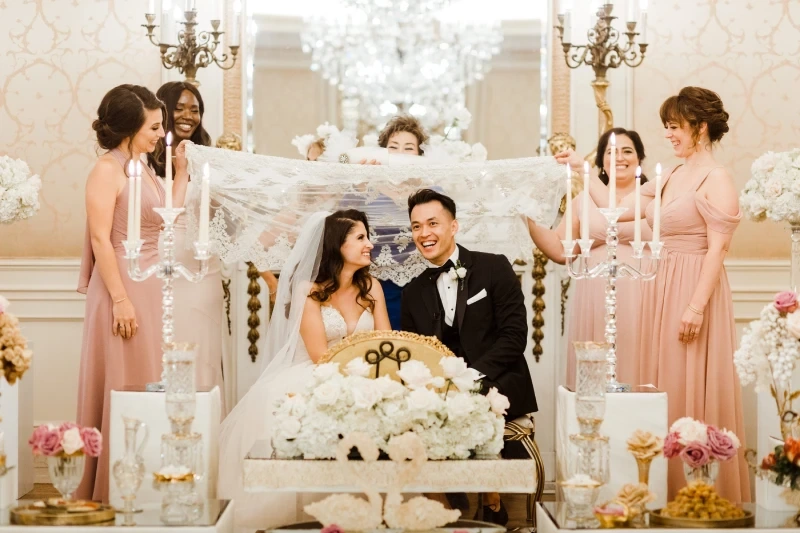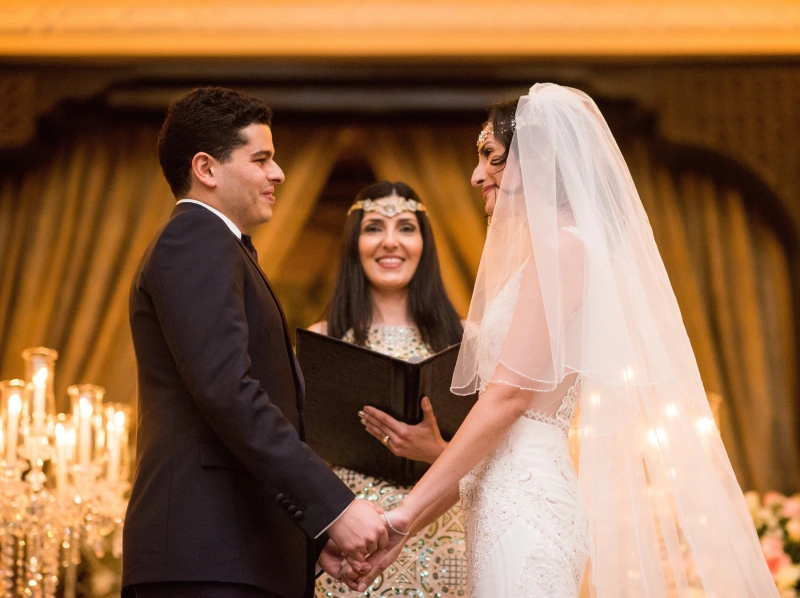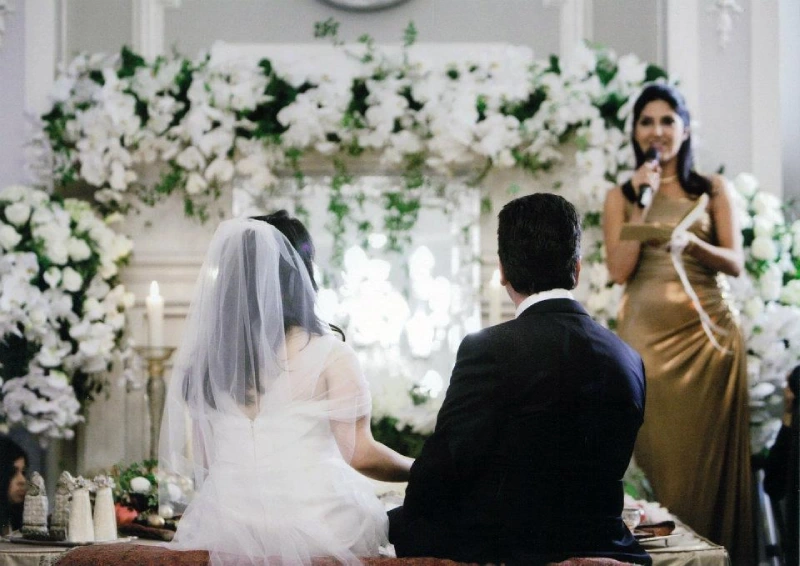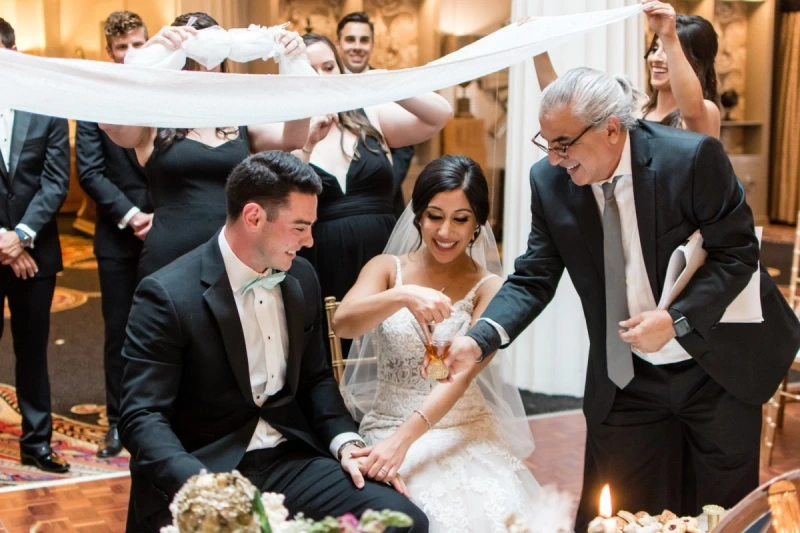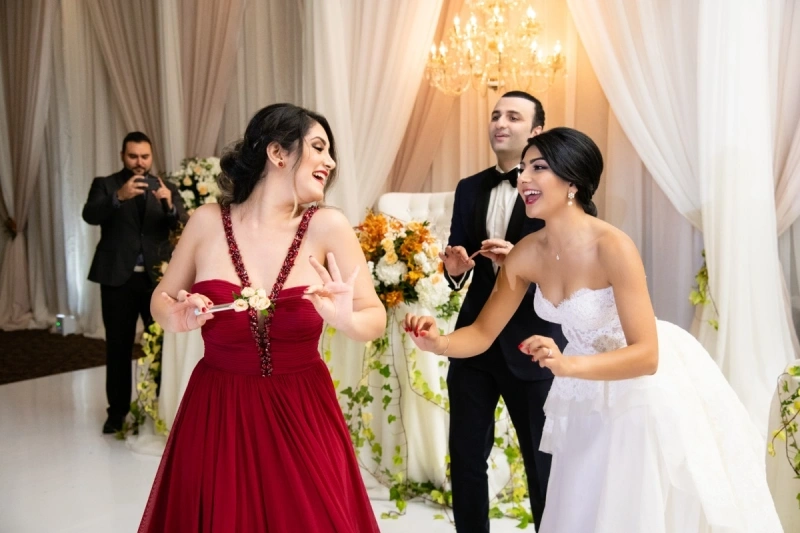Step into a world of opulence, tradition, and joy as we explore the enchanting realm of the Persian wedding ceremony. With roots dating back thousands of years, the Persian wedding is a time-honored celebration that seamlessly weaves together ancient customs and modern influences. From the exquisite details of the bride’s attire to the rhythmic beat of traditional music, every aspect of this ceremony exudes elegance and grace.
In a society where family plays a central role, the Persian wedding is a joyous occasion that brings loved ones together to honor the union of two souls. The elaborate rituals, such as the Sofreh Aghd (wedding spread), symbolize blessings for a prosperous and happy future. Each item on the spread carries its own significance, representing fertility, purity, and abundance.
As we delve deeper into the enchanting world of the Persian wedding ceremony, we will uncover the rich symbolism, traditions, and vibrant colors that make this celebration truly one-of-a-kind. Join us on this journey as we embark on a captivating exploration of love, culture, and the timeless beauty that defines the Persian wedding tradition.
Traditional customs and rituals
Persian weddings are renowned for their rich tapestry of customs and rituals that have been passed down through generations. At the heart of these ceremonies lies the belief in the sanctity of marriage, which is celebrated with great fanfare and elaborate festivities. One of the most cherished rituals is the Sofreh Aghd, a beautifully decorated wedding spread that serves as the focal point for the ceremony. This spread is adorned with symbolic items that represent various blessings, and it is arranged meticulously to create an inviting and mystical atmosphere.
As the ceremony unfolds, guests are often treated to a series of traditional rituals that embody love and commitment. The couple typically engages in a ceremonial exchange of vows, where they declare their love and intentions before their families and friends. Following the vows, the couple may participate in a ceremonial “tying of the knot,” which symbolizes their union and commitment to one another. This act is often accompanied by heartfelt prayers and blessings from family members, emphasizing the importance of community support in the marriage.
Another significant custom is the presence of a “pishdaramad,” or wedding procession, which adds an element of festivity and excitement to the event. The couple is often accompanied by their closest friends and family members as they make their way to the ceremony, creating a joyous atmosphere filled with laughter and music. This tradition not only signifies the couple’s transition into married life but also highlights the communal nature of Persian weddings, where love and support from loved ones are paramount.
The significance of symbols in Persian weddings
Symbols play a vital role in Persian weddings, as each item included in the Sofreh Aghd carries deep meanings and connotations. The items chosen for the spread are not merely decorative; they are imbued with hopes and wishes for the couple’s future. For instance, sugar cones, known as “koni,” are placed on the Sofreh to symbolize sweetness and joy in the couple’s life together. As guests take turns crushing the sugar over the couple’s heads, it represents the desire for blessings and happiness in their marriage.
Another important symbol is the mirror, which reflects the couple’s love and their commitment to each other. The mirror is often positioned at the center of the Sofreh, symbolizing light and clarity in their relationship. It is believed that looking into the mirror together signifies the couple’s shared vision and mutual understanding. This mirror serves as a reminder of the importance of transparency and honesty in their union.
Additionally, traditional items such as pomegranates, eggs, and candles are commonly featured on the Sofreh. Pomegranates represent fertility and abundance, eggs symbolize purity and new beginnings, while candles embody the light of love that shines in their lives. These symbols not only enhance the visual appeal of the wedding spread but also reinforce the deep-rooted cultural significance of love, family, and prosperity in Persian society.
Pre-wedding preparations and traditions
The lead-up to a Persian wedding is filled with exciting and meaningful preparations that reflect the couple’s cultural heritage. One of the most significant pre-wedding events is the “Khastegari,” or the formal engagement ceremony. During this event, the groom’s family visits the bride’s family to express their interest in the union. Traditionally, this involves the presentation of gifts, including sweets and flowers, symbolizing goodwill and the couple’s future together. This event sets the stage for the upcoming marriage and strengthens ties between the two families.
Following the Khastegari, preparations for the wedding ceremony begin in earnest. The couple often selects a wedding planner who specializes in Persian weddings to ensure that every detail is executed flawlessly. From choosing the right venue to coordinating floral arrangements and decorations, these preparations are an integral part of the process. Families also come together to assist with the planning, as it is a communal effort that emphasizes the importance of family involvement in the celebration of love.
In addition to logistical arrangements, there are also several traditional rituals that take place leading up to the wedding day. For instance, the bride may participate in a “Hennah” ceremony, where intricate henna designs are applied to her hands and feet. This event not only adds a beautiful touch to her appearance but also symbolizes the joy and celebration of her upcoming marriage. It is a time for female relatives and friends to gather and share stories, laughter, and blessings for the bride, reinforcing the sense of community and support that characterizes Persian weddings.
The Aghd ceremony: The main event of a Persian wedding
The Aghd ceremony is the centerpiece of a Persian wedding, where the couple officially exchanges vows and enters into a lifelong commitment. This sacred event typically takes place in front of the Sofreh Aghd, surrounded by family and friends who witness the union. The ceremony is often officiated by a religious figure, who guides the couple through the exchange of vows and blessings. The atmosphere during this event is filled with emotion, as the couple embraces their love and the promises they are making to each other.
During the Aghd, the couple participates in various rituals that symbolize their unity. One of the most notable moments is the reading of a traditional marriage contract, known as the “Nikah,” which outlines the rights and responsibilities of both partners. As the couple signs this contract, it signifies their commitment to each other and their willingness to uphold their promises. This moment is often accompanied by heartfelt prayers and blessings from the officiant and family members, creating a deeply spiritual ambiance.
Following the exchange of vows, the couple partakes in a symbolic act of “sweetening” their union. This is typically done by sharing honey, which represents the sweetness of life together. Each partner dips their finger into the honey and feeds it to one another, symbolizing their desire for a life filled with joy and sweetness. The Aghd ceremony culminates in a heartfelt kiss, marking the official beginning of their journey as a married couple and solidifying their love in front of their cherished guests.
Traditional Persian wedding attire and decorations
The elegance of Persian weddings is beautifully showcased through the traditional attire worn by the couple. The bride typically dons a stunning gown that blends contemporary fashion with classic Persian designs. Rich fabrics such as silk and satin are often adorned with intricate embroidery and embellishments, reflecting the opulence of the occasion. The bride’s dress is usually complemented by a delicate veil, which not only enhances her beauty but also symbolizes modesty and purity.
The groom’s attire is equally significant, often consisting of a tailored suit or traditional garments that reflect his cultural heritage. Colors may vary, but deep hues such as navy blue, charcoal, or even rich burgundy are popular choices. Accessories such as a stylish tie or pocket square can add a personal touch, while traditional elements like a “kolah,” or hat, may be included to pay homage to cultural roots. The couple’s attire is a visual representation of their love and the deep respect they have for their traditions.
Decorations play a pivotal role in setting the tone for the wedding. The venue is typically adorned with elaborate floral arrangements, vibrant fabrics, and stunning lighting that create a magical atmosphere. Commonly used flowers include roses, lilies, and peonies, which not only add beauty but also carry symbolic meanings of love and purity. The Sofreh Aghd serves as the centerpiece, and its decoration is meticulously planned to ensure it reflects the couple’s personalities and the essence of their love story.
Traditional Persian cuisine and feasting
A Persian wedding is not only a celebration of love but also a feast for the senses, particularly when it comes to cuisine. The traditional menu is a lavish spread that showcases the rich flavors and diverse ingredients of Persian cooking. Popular dishes include succulent kebabs, fragrant rice pilaf, and a variety of stews known as “khoresh.” Each dish is carefully prepared to ensure that it not only tastes exquisite but also represents the couple’s cultural heritage.
Rice is a staple in Persian cuisine, and its preparation is an art form. The iconic “Chelo,” or steamed rice, is often served alongside marinated meats that have been grilled to perfection. Accompanying dishes may include grilled vegetables, saffron-infused rice, and tangy pickles, each offering a burst of flavor that tantalizes the taste buds. Guests are encouraged to enjoy a variety of dishes, making the dining experience a communal event that fosters conversation and connection among family and friends.
Desserts also hold a special place in Persian weddings, with sweet treats that reflect the joy of the occasion. Traditional desserts such as baklava, saffron ice cream, and “zoolbia bamieh” (syrupy fritters) are often served to satisfy the guests’ sweet cravings. The presentation of these desserts is equally important, with elaborate platters that entice the senses. The act of sharing food is symbolic of abundance and togetherness, reinforcing the idea that love is nourished through the joys of communal feasting.
Music and dancing in Persian weddings
No Persian wedding is complete without the lively music and dancing that bring energy and excitement to the celebration. Traditional Persian music, characterized by its melodic tunes and rhythmic beats, sets the mood for the festivities. Musicians often perform live, playing instruments such as the santur, tar, and daf, creating a vibrant atmosphere that encourages guests to join in the celebration. The music not only entertains but also evokes a sense of cultural pride and connection to heritage.
Dancing holds a central role in Persian wedding celebrations, with guests eagerly participating in traditional dances that are both joyous and expressive. One of the most popular forms of dance is the “Raghs,” which often involves intricate footwork and swirling movements. The couple may lead the dance, inviting family and friends to join them in a circle, symbolizing unity and collective joy. The atmosphere becomes electrifying as laughter and applause fill the air, creating unforgettable memories for everyone present.
In addition to traditional dances, modern influences have also made their way into Persian weddings. Couples may choose to incorporate contemporary music and dance styles, blending cultural traditions with their personal preferences. This fusion allows for a diverse and dynamic celebration that appeals to guests of all ages. Whether it’s a classic Persian song or a modern pop hit, the dance floor becomes a space of connection, laughter, and celebration, reflecting the couple’s love story in every step.
Modern adaptations and trends in Persian weddings
As Persian weddings continue to evolve, modern adaptations and trends have emerged, reflecting the changing dynamics of society and cultural preferences. One notable trend is the incorporation of personalized elements that reflect the couple’s unique love story. From custom wedding favors to themed decor, couples are increasingly seeking ways to infuse their personalities into the celebration, creating a memorable experience that resonates with their guests.
Additionally, many couples are opting for destination weddings, choosing picturesque locations that enhance the beauty of their ceremony. Whether it’s a beachside affair, a vineyard retreat, or a grand castle setting, these locations provide a stunning backdrop for the couple’s vows and celebrations. Destination weddings allow couples to create an intimate atmosphere while still honoring their cultural traditions through carefully planned elements, such as the Sofreh Aghd and traditional cuisine.
Technology has also played a significant role in modern Persian weddings, with couples utilizing social media platforms to share their love story and wedding journey. From pre-wedding photo shoots to live streaming the ceremony for distant friends and family, technology has enabled couples to connect with loved ones in innovative ways. This blend of tradition and modernity creates a dynamic experience that honors the rich heritage of Persian weddings while embracing contemporary influences.
Conclusion: The enduring beauty of Persian wedding ceremonies
The Persian wedding ceremony is a breathtaking celebration that embodies love, tradition, and community. From the intricate customs and rituals to the vibrant colors and flavors, every aspect of the event reflects the rich cultural heritage of Persia. The enduring beauty of these ceremonies lies in their ability to connect generations, bringing families together to honor the union of two souls.
As we explore the enchanting world of Persian weddings, we discover that they are not merely events but profound expressions of love and commitment. Each ritual, symbol, and tradition serves to reinforce the values of family, respect, and unity. In a rapidly changing world, these ceremonies continue to thrive, adapting to modern influences while preserving the essence of their cultural roots.
Ultimately, Persian wedding ceremonies are a testament to the timeless beauty of love, celebrating the journey of two individuals as they embark on a shared path filled with hope, joy, and endless possibilities. The memories created during these celebrations linger in the hearts of all who attend, reminding us of the power of love to unite people and create lasting bonds that transcend time and culture.

